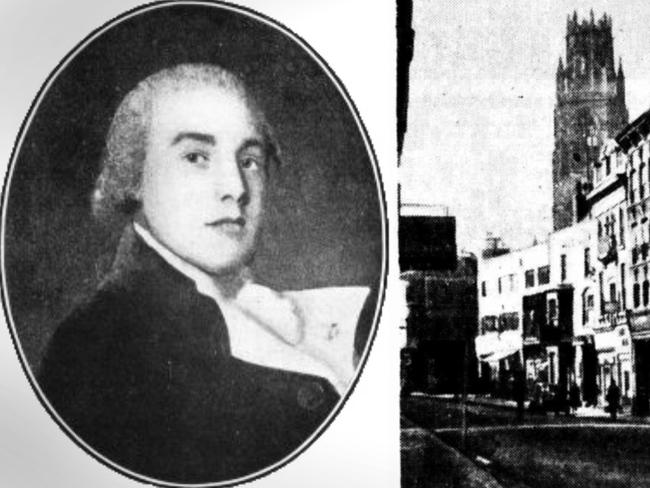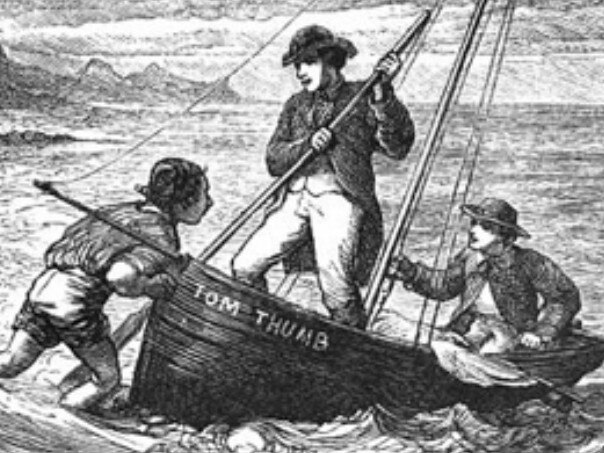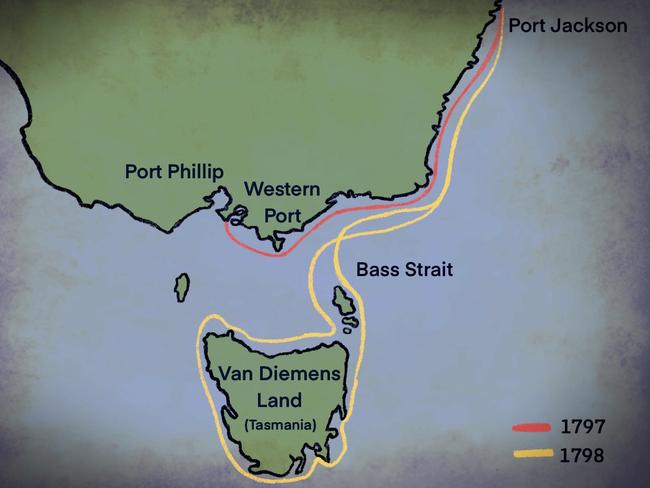George Bass circumnavigated Tasmania then vanished forever
He circumnavigated Tasmania, then vanished without a trace. Did iconic explorer George Bass flee overseas or was he murdered or enslaved in the silver mines of Peru?

News
Don't miss out on the headlines from News. Followed categories will be added to My News.
In the late 1700s, Australian explorers were made of steel and madness.
A burning curiosity and a thirst for thrills drove them over the horizon again and again.
George Bass was such a man.
In a little, open vessel not much bigger than a rowboat, he made an impossibly long voyage down the coast from Sydney to what is now Victoria, in the days before Melbourne was even thought of.
With Matthew Flinders, he was the first explorer to prove that Tasmania was separated from the mainland by a stretch of water that now bears his name.
But his daring spirit spilt over into his final mysterious and controversial voyage.
At the age of 32, with a ship full of contraband, Bass sailed into hostile Spanish waters and vanished.
Rumours he was sent to the silver mines of Peru, languished in prison, or lived a wealthy new life abroad, adorn the enduring mystery of one of Victoria’s earliest explorers.

WANDERLUST
Born in Lincolnshire in 1771, Bass went to Boston Grammar school before studying medicine and joining the navy as a surgeon.
His hunger for adventure spurred him to sail to Australia in 1795, where he wasted no time expanding the lines on the map.
He teamed up with 21-year-old Matthew Flinders, who later became the first to circumnavigate the continent and is believed to have named it Australia.
Just a month after their arrival in New South Wales, the intrepid pair took to sea in a tiny open vessel named Tom Thumb, which was shorter than three metres and had a crude mast, charting unknown areas of the New South Wales coast.
Then came what was perhaps Bass’s most daring mission.
In 1797, with a crew of six in a whale boat, he voyaged south.

In this small craft, open to the weather, they sailed about 900km from Sydney down the New South Wales coast to Gippsland, then to Western Port and almost to the heads of Port Phillip Bay.
The following year he returned south with Flinders on the ship Norfolk and successfully circumnavigated Tasmania, confirming their theory that it was detached from the mainland.
It was later recommended by Flinders to the colonial governor that the stretch of water between the mainland and Tasmania be named Bass Strait.
After sailing back to England, in 1801 Bass married Elizabeth Waterhouse.
Three months later he returned to Australia. They never saw each other again.

THE LAST VOYAGE
Perhaps sick of the low pay offered by the navy, Bass became interested in lucrative trade run by merchants in the Pacific.
Some accounts say Bass weighed down his new ship Venus with goods in England that he hoped to trade when he arrived in Australia.
But when he arrived the goods were in healthy supply and he faced a financial loss.
Instead he ran voyages for pork in the Pacific and made a tidy profit.
Then in early 1803 came a tempting and dangerous opportunity.
Bass intended to take a cargo of goods for trade in South America, which was tightly controlled by the Spanish who jealously guarded their market from outside sellers.
It is believed much of the goods Bass wanted to trade, maybe including some of the goods he had originally brought from England, were contraband in the eyes of the Spanish.
But the lure of riches was too strong.
In February, with full knowledge he was risking his life, Bass took the Venus out of Port Jackson towards the Americas, and was never seen again.
A rumour rode the waves that Bass had been captured by the Spanish who looted his ship and cargo and enslaved him to the horrors of the Peruvian silver mines.
But that tale could never be verified.

It was speculated that Bass, who was a strong speaker and reader of Spanish, might have made a bargain with his captors if the Spanish indeed seized his ship.
More wild stories echoed around the Pacific of Bass making it to South America alive, unable or unwilling to return to Australia.
No record of his presence in South America was ever found and his disappearance remains one of the longest enduring maritime mysteries.
As the months dragged on, and without a trace of Bass found anywhere, the admiralty in Britain was left with no choice.
At the age of 32 Bass was declared lost at sea and Elizabeth, the wife with whom he had spent three months of marriage, was granted a pension for navy widows.
The question is left hanging: was Bass murdered, imprisoned or enslaved?
Did he flee for reasons unknown?
Or was he simply swallowed up by the sea?
More Coverage
Originally published as George Bass circumnavigated Tasmania then vanished forever



